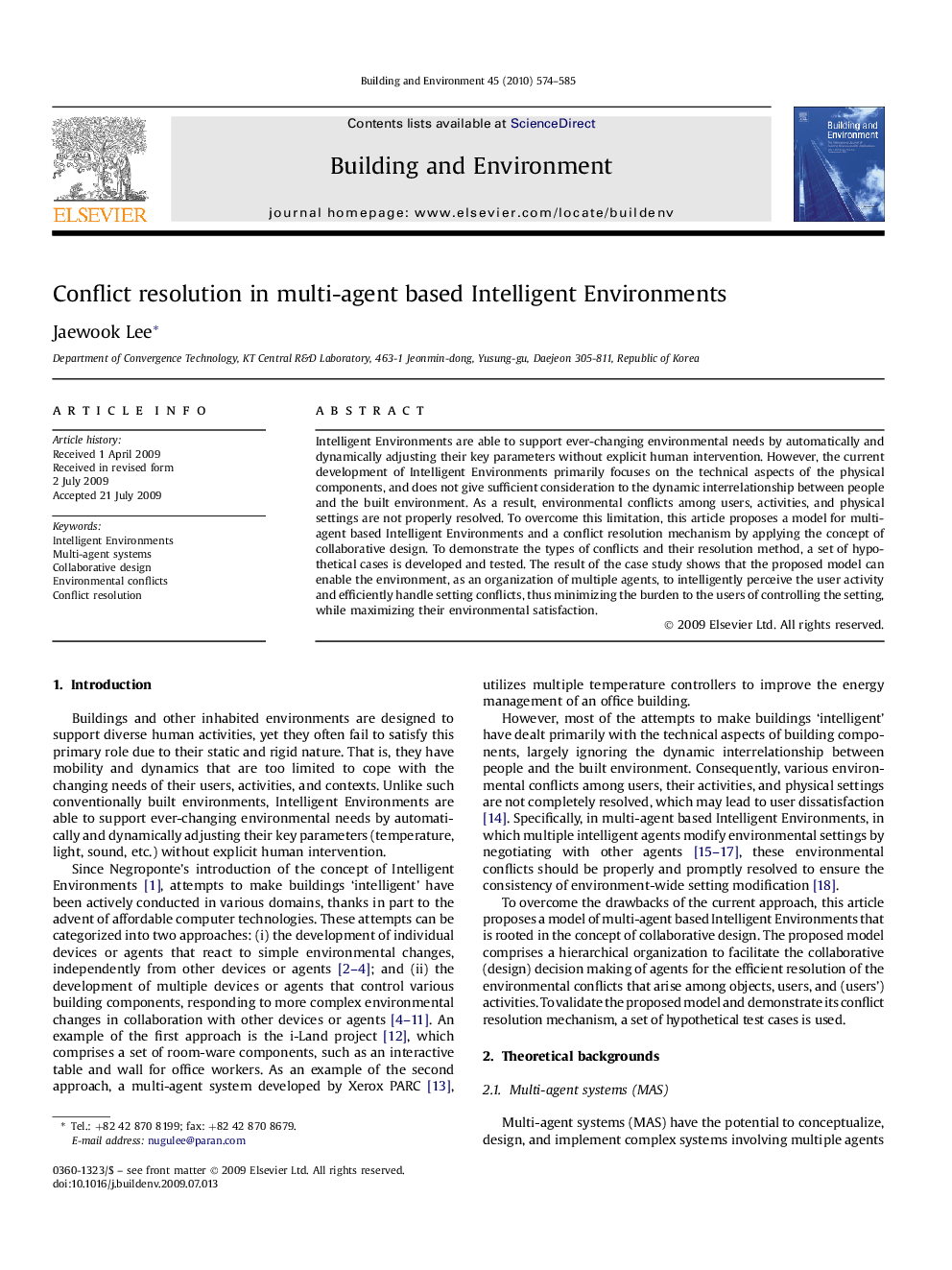| Article ID | Journal | Published Year | Pages | File Type |
|---|---|---|---|---|
| 249386 | Building and Environment | 2010 | 12 Pages |
Intelligent Environments are able to support ever-changing environmental needs by automatically and dynamically adjusting their key parameters without explicit human intervention. However, the current development of Intelligent Environments primarily focuses on the technical aspects of the physical components, and does not give sufficient consideration to the dynamic interrelationship between people and the built environment. As a result, environmental conflicts among users, activities, and physical settings are not properly resolved. To overcome this limitation, this article proposes a model for multi-agent based Intelligent Environments and a conflict resolution mechanism by applying the concept of collaborative design. To demonstrate the types of conflicts and their resolution method, a set of hypothetical cases is developed and tested. The result of the case study shows that the proposed model can enable the environment, as an organization of multiple agents, to intelligently perceive the user activity and efficiently handle setting conflicts, thus minimizing the burden to the users of controlling the setting, while maximizing their environmental satisfaction.
